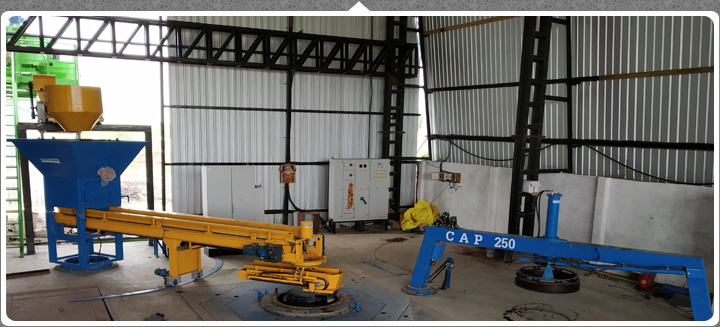
The construction industry is one of the most significant industries in every country as it caters to the building of infrastructural facilities. Concrete is an integral part of this industry and so, processes for manufacturing concrete as well as using it have always been an area of research and development. In an era of automation, such processes require equipment to replace slow and error-prone manual tasks.

Concrete Equipment Trends
For years, there have been considerable innovations in the field of concrete equipment. To name a few, self-loading concrete mixers, innovative hoses for watering, skid loaders etc. The development of advanced equipment is based on the following trends that are shaping the concrete industry:
With the rising pollution levels in the world, the primary focus of every industry is now on improving the systems so as to reduce the environmental pollution. Some solutions are mentioned here.
Eco-friendly Construction
Steel and concrete are the two major components of the construction industry. Production of these encompasses significant levels of greenhouse gas emissions. So, to make the processes environment-friendly, green and sustainable substitutes like cross-laminated timber are trending. The manufacturing of this does not involve high gas emissions. With the use of renewable raw material like these, processes and their outcomes are made environmental friendly too. To support this, special press lines are used which include pieces of equipment such as panel sanding machines, CNC joinery bridges, planers, crosscut saw, moisture meters, scanners, strength graders, finger jointing machines, and glue applicators.
Cross Laminated Timber
Another way of environmental protection is through Zero-Net-Energy Buildings. As the name suggests, these buildings produce energy to meet their energy needs. The equipment used for such building include energy modeling software, solar panels, insulators, heating and cooling equipment, lighting apparatus etc.
Zero Net Energy Buildings
Every industry strives to explore ways for efficient processes which make the existing tasks more productive. There are mainly two aspects of efficiency, raw material and time, which can be conserved in the following ways.
Efficient Processes
Labor costs and management are a major hassle for the construction industry. So, the manual processes are gradually giving way to automated ones. This reduces the labor requirements of the construction industry. The same tasks, with the use of advanced equipment, have become much less labor intensive. The pieces of equipment are now less cumbersome to handle and require minimum human intervention.
Automation
Automation is not enough. Every automated process innovation has to incorporate, apart from quality, less consumption of raw material and reduction in the time taken. To achieve this, the concrete industry is witnessing increasing use of electronic equipment. These facilitate less fuel consumption and make the processes speedy. Computer controlled assembly lines have replaced the conventional ones. These require special equipment coordination.
Use of Electronic Equipment
A noteworthy emerging trend in the construction industry is the modular construction using prefabricated structures. Very big construction projects can be completed without much hassles and in no time, with the use of such modules. The use of such prefabricated material requires special equipment for production and transport of these heavy modules. It is also important to have specific equipment for assembly of these modules at the site.
Conclusion
Concrete equipment industry. cannot be immune to the latest trends of eco-friendly construction and automation. So, different technology innovations are taking place and it is the responsibility of every construction business to follow these trends. Get some of these types of equipment and leverage the emerging technology to the best for your business growth now!
Recent Articles
- How Drycast Technology is Changing the Concrete Pipe Industry?
- Common Mistakes to Avoid When Selecting Pipe Moulds for Your Machine
- How to Match Your Concrete Pipe Making Machine with the Perfect Drycast Mould?
- How to Keep Concrete Pipe Machine and Drycast Moulds in Top Condition? Maintenance Guide
- Box Pallets & U-Drain Pallets: Essential Components in Modern Drainage Systems





 BACK TO ARTICLES
BACK TO ARTICLES